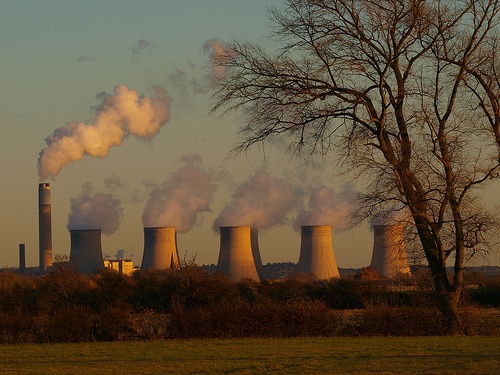The federal government has taken another step in its car wars with California. Late in September the Environmental Protection Agency (EPA) and the National Highway Traffic Safety Administration (NHTSA) issued joint rules declaring NHTSA’s preemptive authority to set national standards covering greenhouse gas (GHG) emissions from petroleum-fueled vehicles and electric vehicles, and revoking a waiver from EPA that lets California set such standards.
Read MoreAudit, Compliance and Risk Blog
Feds Issue Nationwide Motor Vehicle Greenhouse Gas Standards and Declare California’s Standards to be Preempted
Posted by Jon Elliott on Tue, Oct 22, 2019
Tags: California Legislation, Environmental risks, Environmental, EPA, ghg, Transportation, greenhouse
DC Circuit Upholds Most of EPA’s 2015 Standards For Ground Level Ozone
Posted by Jon Elliott on Tue, Sep 17, 2019
On August 23, the federal Court of Appeals for the District of Columbia (DC Circuit) upheld most aspects of the National Ambient Air Quality Standards (NAAQS) for ground level ozone adopted by the Environmental Protection Agency (EPA) in 2015. The Clean Air Act (CAA) requires EPA to create a list of air pollutants based on emissions that cause or contribute to air pollution that may reasonably be anticipated to endanger public health or welfare (criteria pollutants), to establish NAAQS based on these criteria, and to review the NAAQS every 5 years.
Read MoreTags: Business & Legal, Health & Safety, Environmental risks, Environmental, EPA, Greenhouse Gas, ghg, CAA
EPA Proposes to Allow Hazardous Air Pollutant Sources to Reclassify From “Major” to “Area” Using Administrative Controls
Posted by Jon Elliott on Tue, Sep 10, 2019
The Clean Air Act (CAA) directs the Environmental Protection Agency (EPA) to define “hazardous air pollutants (HAPs)” that may pose acute health hazards, and to impose regulations to reduce those hazards. EPA requires permits for “major sources” of HAPs based on “Maximum Achievable Control Technologies (MACT),” and lesser controls for non-major “area sources.” Since the Trump Administration took office, EPA has pursued several initiatives to make it easier for sources to reclassify from “major” to “area” in order to reduce their regulatory responsibilities. For example, in January 2018 EPA ended a decades-old policy declaring that every emission source that met major source criteria at the time a MACT became effective was “once in, always in” and could not requalify as a less-regulated area source by accepting legally binding controls that reduce its “potential to emit (PTE).” (I wrote about this change here).
Read MoreTags: Health & Safety, Environmental risks, Environmental, EPA, Greenhouse Gas, ghg, Hazcom, Oil & Gas
Motor Vehicle Greenhouse Gas Standards–California and Four Manufacturers Finesse the Turf War With the Federal Government
Posted by Jon Elliott on Tue, Aug 20, 2019
Since the Trump Administration reversed the federal government’s agreement with California for joint motor vehicle greenhouse gas (GHG) standards, federal and state agencies have moved steadily to assert their respective authorities and to sue their counterparts. However, on July 25, 2019 California and 4 major vehicle manufacturers announced a voluntary agreement that eases the state requirements somewhat while making the looser federal standards irrelevant for those companies – and for any additional manufacturers that might join later.
Read MoreTags: Business & Legal, California Legislation, Environmental risks, Environmental, Greenhouse Gas, ghg
The Environmental Protection Agency (EPA) has just issued rules that repeal and replace one of the Obama-era EPA’s signature efforts to reduce greenhouse gas (GHG) emissions. Effective September 6, EPA’s new “Affordable Clean Energy Rule” (ACE) will replace the “Clean Power Plan” adopted in 2015 but stayed by litigation (I wrote about the proposed CPP here). As anyone who has compared the Obama and Trump Administrations' approaches to climate change would expect, the new rule reduces the old rule’s requirements. It softens the mandates in the earlier rule, and offers states more flexibility to design their own efforts to control GHG emissions from existing fossil fuel-fired electricity generating units (EGUs) by eliminating CPP requirements that states consider operational changes “outside the fenceline” of the regulated EGUs.
Read MoreTags: Environmental risks, Environmental, EPA, Greenhouse Gas, ghg
Reporting EHS Releases – Responsibilities Continue Except For Some Farm Emissions
Posted by Jon Elliott on Tue, Jul 16, 2019
Among its many provisions, the Emergency Planning and Community Right-To-Know Act of 1986 (EPCRA, in this case Section 304) requires facilities to report releases of specified hazardous and extremely hazardous substances, if the release exceeds an applicable threshold reportable quantity (RQ). The Environmental Protection Agency (EPA) administers these requirements, and has just approved an exemption for emissions from animal wastes at farms (this exemption tracks one amended into the Superfund law (CERCLA) in 2018). Other types of facilities and activities are still subject to these reporting requirements, so it’s a good time to review them.
Read MoreTags: Health & Safety, Environmental risks, Environmental, EHS, EPA, Greenhouse Gas, ghg, Hazcom
The Environmental Protection Agency (EPA) has completed a long review, and reaffirmed the primary National Ambient Air Quality Standard (NAAQS) for oxides of sulfur (SOX; usually measured as sulfur dioxide (SO2)). This is the first review of the primary SOX NAAQs since 2010 (primary standard – EPA did not review the secondary SOX NAAQS established in 2012).
Read MoreTags: Environmental risks, Environmental, EPA, Greenhouse Gas, ghg, SOX, CAA
More Jurisdictions Targeting Short-Lived Climate Pollutants
Posted by Jon Elliott on Tue, Dec 11, 2018
Although carbon dioxide (CO2) is the most common and most-discussed greenhouse gas (GHG), it is by no means the only one. And on a per-unit basis, it is by no means the most potent GHG either. Air quality agencies and climate change scientists also focus attention on so-called “short-lived climate pollutant (SLCP)” means an agent that has a relatively short lifetime in the atmosphere, from a few days to a few decades, and a warming influence on the climate that is more potent than that of carbon dioxide. Individual jurisdictions have addressed individual SLCPs, but comprehensive approaches have been limited.In 2014, California legislation assigned that state’s Air Resources Board (ARB) to adopt a SCLP Reduction Strategy (I wrote about the legislation and 2016’s draft strategy here).
Read MoreTags: Environmental risks, Environmental, Greenhouse Gas, ghg, climate change
United States Government Quietly Releases Dramatic New Recommendations For Combating Climate Change
Posted by Jon Elliott on Tue, Dec 04, 2018
While domestic climate politics in the U.S. and Canada generate hot air about the reality and urgency of climate change, climate science proceeds largely on its own pathways, and climate policies to reduce greenhouse gas (GHG) emissions are being proposed and developed by a wide variety of entities. On November 23 – often referred to as “Black Friday” by retailers and shoppers in the U.S., regardless of their attitudes about global warming – the U.S. government’s U.S. Global Change Research Program (USGCRP) delivered urgent recommendations for aggressive policies. This Fourth National Climate Assessment (NCA4) builds on last year’s Climate Science Special Report (which I wrote about here).
Read MoreTags: Business & Legal, Environmental risks, Environmental, Greenhouse Gas, ghg, climate change
EPA Proposes To Replace Obama-Era Rules For Coal Fired Power Plants
Posted by Jon Elliott on Tue, Oct 16, 2018
The Trump-era Environmental Protection Agency (EPA) has proposed to repeal and replace another of the Obama-era EPA’s signature efforts to reduce greenhouse gas (GHG) emissions. EPA has now proposed an “Affordable Clean Energy Rule”, to replace the “Clean Energy Plan” adopted in 2015 but stayed by litigation. The new rule softens the mandates in the earlier rule, and offers states more flexibility to design their own efforts to control greenhouse gas (GHG) emissions from existing fossil fuel-fired electricity generating units (EGUs) by eliminating Clean Power Plan requirements that states consider operational changes “outside the fenceline” of the regulated EGUs.
Read MoreTags: Environmental risks, Environmental, EPA, Greenhouse Gas, ghg










